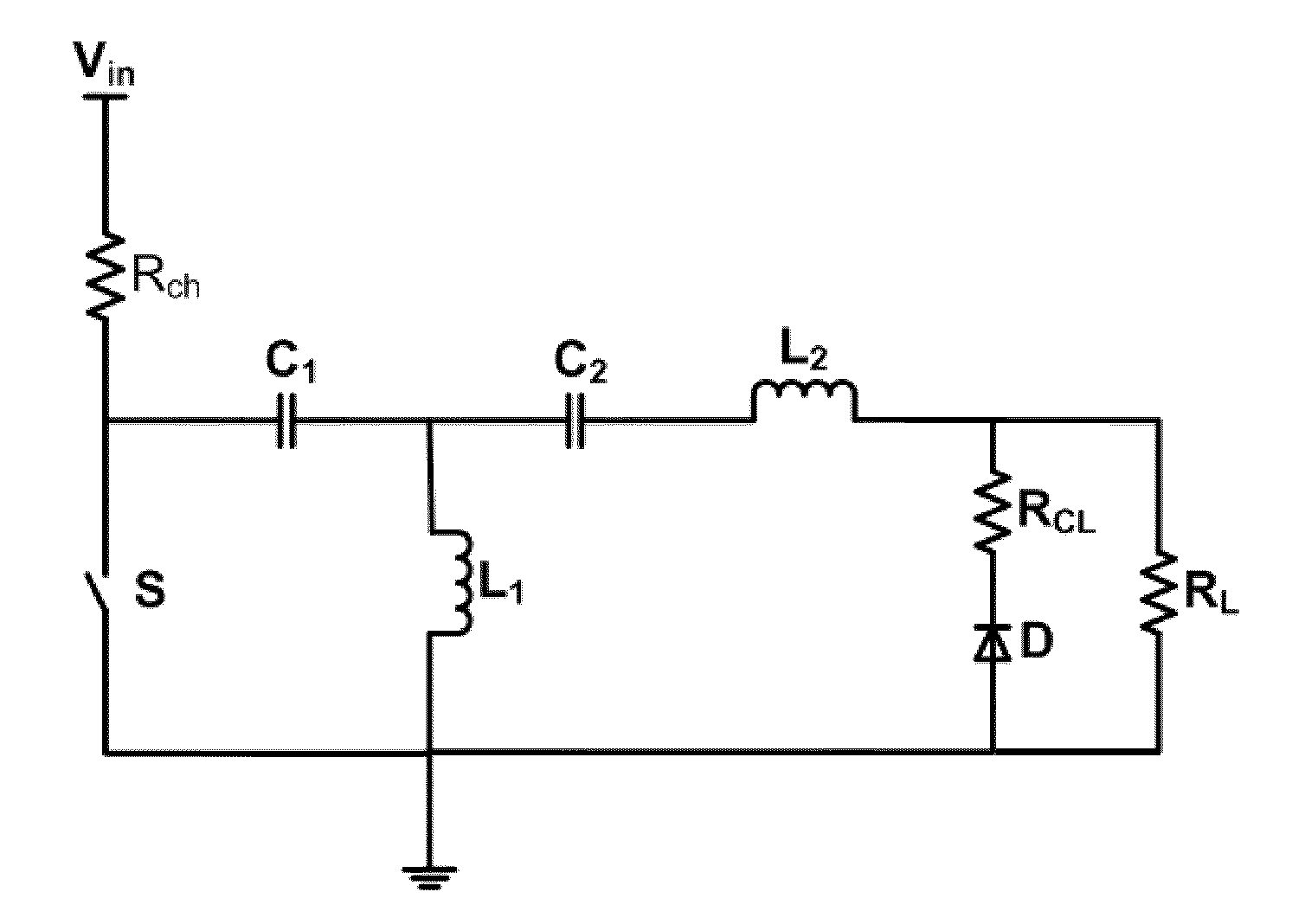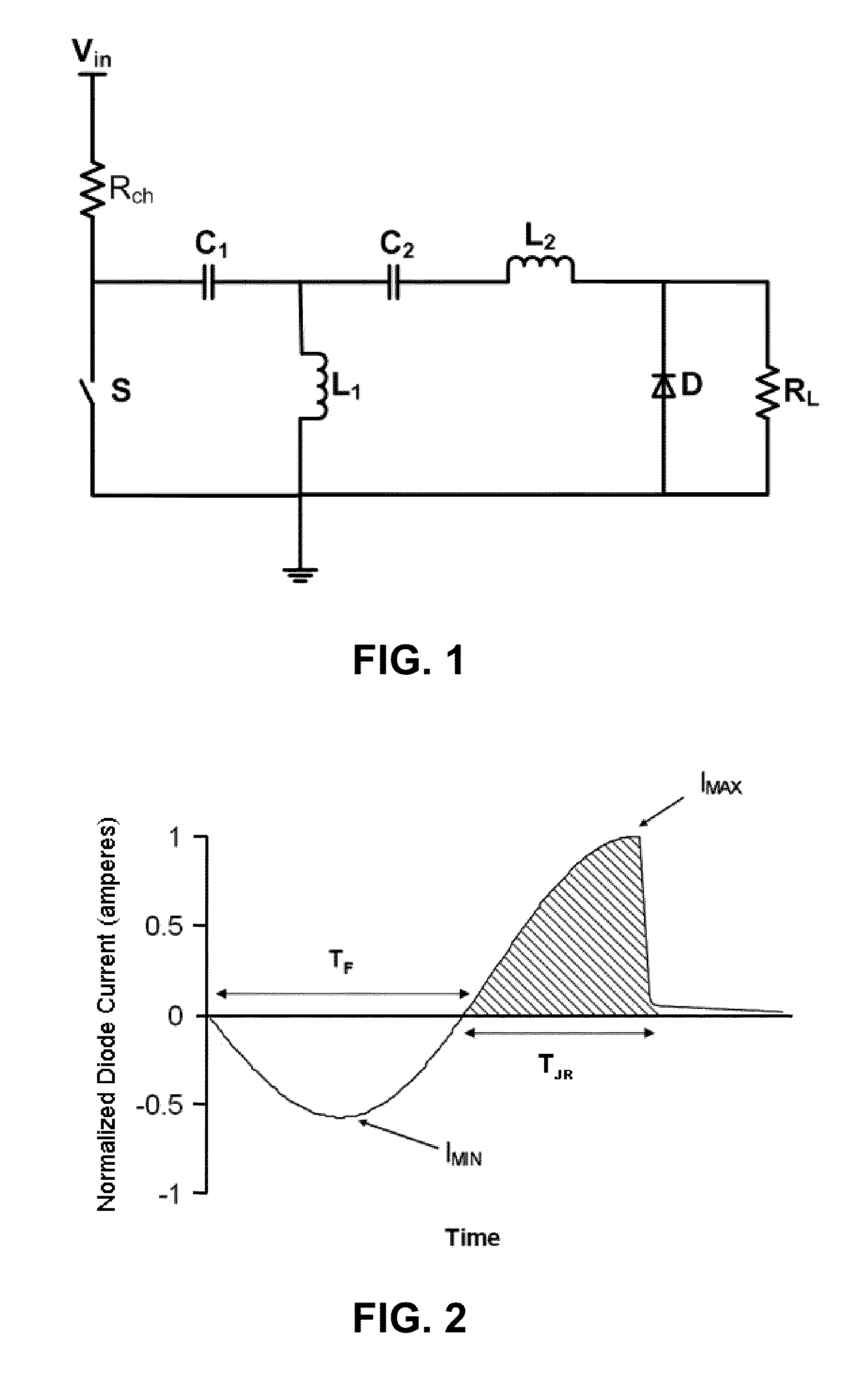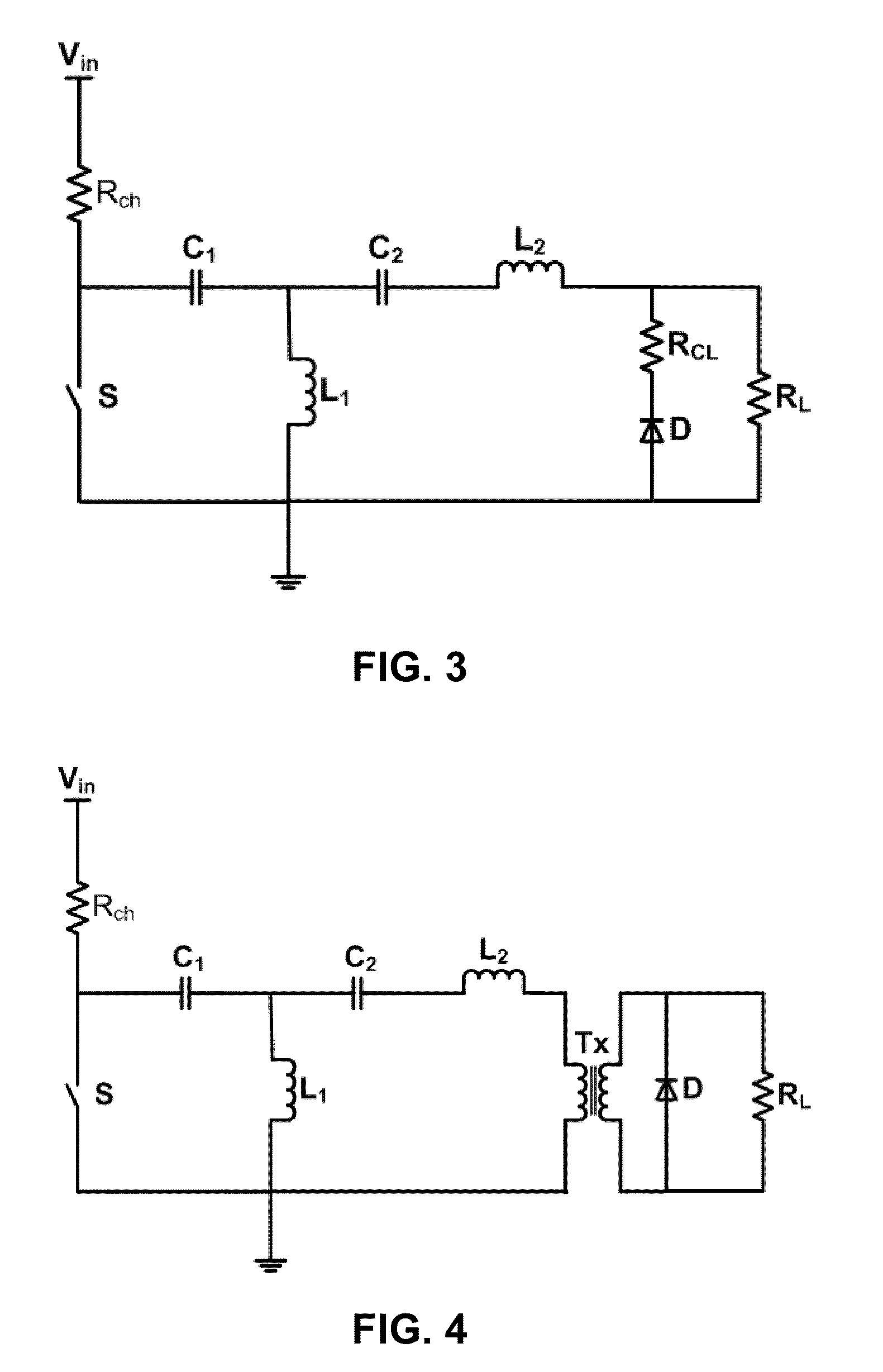Nanosecond pulse generator
a generator and nanosecond technology, applied in the field of pulse generators, can solve the problems of low repetition rate, physical largeness, cell death,
- Summary
- Abstract
- Description
- Claims
- Application Information
AI Technical Summary
Benefits of technology
Problems solved by technology
Method used
Image
Examples
example 1
Resonant Network Design
[0070]In this example, the values of the capacitors and inductors may be determined by using a mathematical model for the circuit shown in FIG. 1 as follows. The diode D may be approximated as lossless with a given junction recovery time of about 50 nanoseconds. Then, the forward biased diode may be modeled as an ideal voltage source with a voltage equal to the forward voltage of the diode. This model may be valid until the reverse current flows through the diode for a period equal to the junction recovery time. At this time the conductivity of the lossless diode instantaneously may go to zero. Since the forward biased diode may be modeled as having zero impedance, the diode may be replaced by a short circuit to derive a mathematical model for the current. This expression may be used as a guide to choose inductance and capacitance values that produce an appropriate current to ensure proper switching of the diode (i.e. substantially satisfying IMAX=2*IMIN). The...
example 2
Switch S
[0073]In this example, a variety of solid state switches were tested to determine a switch that may be suitable to use for the construction of the pulse generator of the instant invention. Five different commercially available switches were purchased: one IGBT type switch (rated at 60 amperes, model number GPS60B120 KD) from International Rectifiers (El Segundo, Calif.); three MOSFET type switches (first one rated at 13 amperes, model number APT13F120B; second one rated at 28 amperes, model number APT135B2FLL; and third one rated at 37 amperes, model number APT37M100L) from Microsemi Corporation (Irvine, Calif.); and one SCR type switch (model number SK065K) from Littelfuse (Chicago, Ill.). These switches were evaluated by constructing a circuit shown in FIG. 1 with L1=L2=about 250 nH and C1=C2=about 12 nF. The diode D was replaced with a short wire. The short circuit current was measured with a current transformer. The peak of the forward current was recorded for each switc...
example 3
Construction of a Pulse Generator and Pulses Obtained by Using this Generator
[0077]In this Example, two pulse generators were designed and built by using the mathematical model described in Example 1. First pulse generator was designed to provide a pulse with a length of about 5 nanoseconds and the other with a length of about 2.5 nanoseconds.
[0078]The pulse generators were constructed by using commercially available EIC CN25M diodes or MURS2510 diodes (both about 1 kV, about 25 amperes DC rating). EIC CN25M diodes had about 50 nanoseconds junction recovery time and MURS2510 diodes about 100 nanoseconds. Both diodes had very short snap-off times. To obtain a pulse with an amplitude of about 5.0 kV with a current of about 100 amperes, five diodes were connected in series to form a stack and five of these stacks were connected in parallel, which formed the diode array.
[0079]It was determined that, for the 5 nanosecond pulse generator, L1=L2=about 260 nH and C1=C2=about 12 nF and that,...
PUM
 Login to View More
Login to View More Abstract
Description
Claims
Application Information
 Login to View More
Login to View More - R&D
- Intellectual Property
- Life Sciences
- Materials
- Tech Scout
- Unparalleled Data Quality
- Higher Quality Content
- 60% Fewer Hallucinations
Browse by: Latest US Patents, China's latest patents, Technical Efficacy Thesaurus, Application Domain, Technology Topic, Popular Technical Reports.
© 2025 PatSnap. All rights reserved.Legal|Privacy policy|Modern Slavery Act Transparency Statement|Sitemap|About US| Contact US: help@patsnap.com



